The Most Memorable TV Hair of 2023 So Far
-
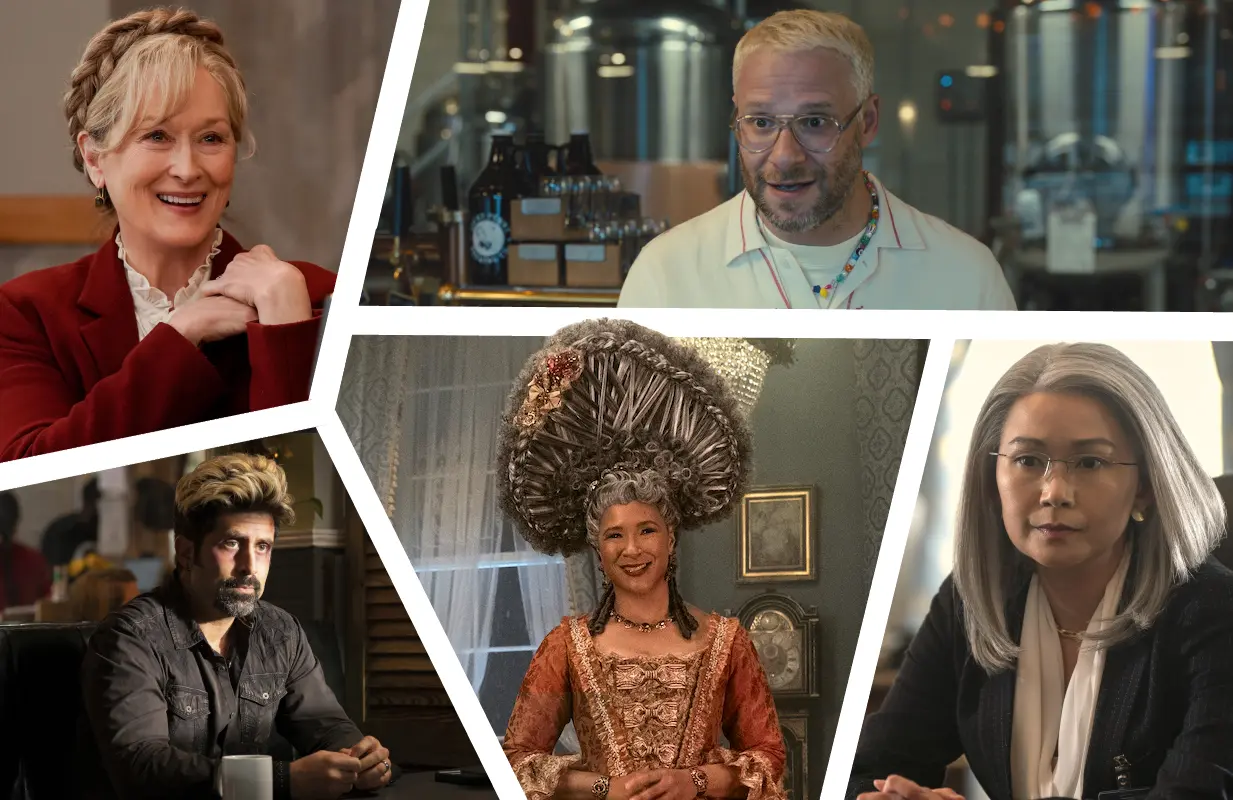 Meryl Streep in Only Murders in the Building; Seth Rogen in Platonic; Stephen Schneider in The Righteous Gemstones; Golda Rosheuvel in Queen Charlotte; Hong Chau in The Night Agent (Photo: Patrick Harbron/Hulu; Apple TV+; Jake Giles Netter/HBO; Liam Daniel/Netflix; Dan Power/Netflix; Primetimer graphic)
Meryl Streep in Only Murders in the Building; Seth Rogen in Platonic; Stephen Schneider in The Righteous Gemstones; Golda Rosheuvel in Queen Charlotte; Hong Chau in The Night Agent (Photo: Patrick Harbron/Hulu; Apple TV+; Jake Giles Netter/HBO; Liam Daniel/Netflix; Dan Power/Netflix; Primetimer graphic)Hair can make or break a TV viewing experience. Best case scenario, it enhances it, revealing something about the character sporting it, providing a moment of visual joy for viewers at home. Worst case, it is so outlandish, poorly styled, or unrealistic that it pulls focus from just about anything else going on in the scene. In either situation, however, it leaves a lasting impression — Natasha Lyonne’s Poker Face locks are just as memorable for being undeniably good as Hong Chau’s The Night Agent wig is for being inexcusably bad.
There have also been some big hair moments off-screen this year — for instance, after A Black Lady Sketch Show was canceled in July, production donated all the series’s wigs to the nonprofit Beauty 2 The Streetz. And there have been plenty of on-screen hair moments we’ve already wiped from our minds forever, like The Weeknd’s rattail in The Idol (and really, everything else about The Idol). But these are the manes and mustaches that, for better or worse, we just can’t stop thinking about.
The Wilder the Hair, the Closer to God: Casey Wilson and Stephen Schneider in The Righteous Gemstones
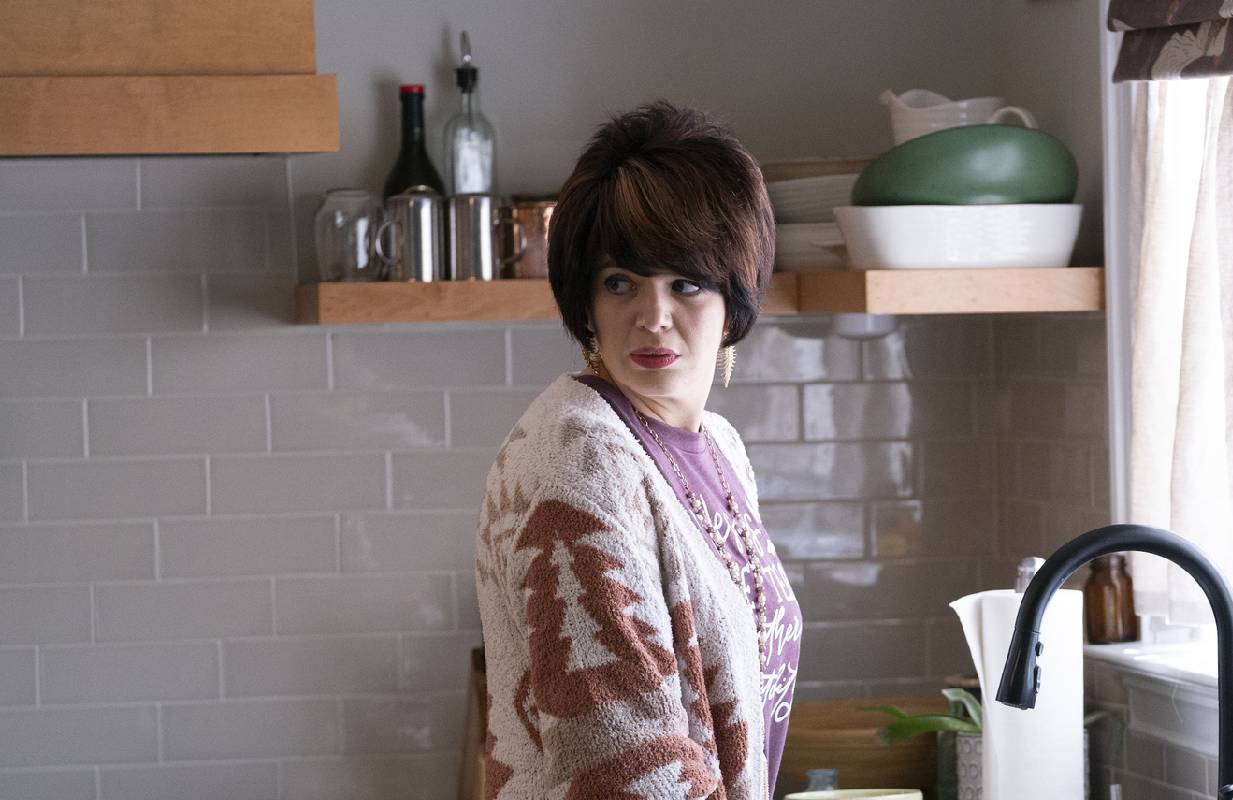
From the beginning, The Righteous Gemstones made a big (and in some cases, wig) statement. Judy’s (Edi Patterson) curls, Jesse’s (Danny McBride) sideburns, Keefe’s (Tony Cavalero) mullet — each style is larger-than-life while saying something very distinct about the person sporting it. In Season 3, two new and just as memorable styles dropped courtesy of Stephen and Kristy Downs (Stephen Schneider and Casey Wilson), and their 'dos tell the world exactly who they want to be. Stephen sees himself as a bad boy rock star, so he tries to look younger with grown-out frosted tips. Kristy just wants respect via an age-appropriate, asymmetrical cut with just enough volume to fit in with the most righteous of church folks — would a woman with hair like that smash a glass blender into her husband’s face? She’s certainly hoping that anyone who sees it says no. — Brianna Wellen
Heavy Is the Head that Carries the Wig in Queen Charlotte

There’s a lot to praise about Queen Charlotte’s hair design. For one, the series highlights its Black actors’ natural hair. When young Charlotte (India Amarteifio) is crowned queen, the royal jewels sit atop a textured afro instead of a more traditional regency era style (styles that were at the time created for white hair). But just as admirable are the towering royal wigs created for the older Queen Charlotte (Golda Rosheuvel) who has fully embraced a life of luxury and excess. Piles of hair are manipulated into bows and exaggerated curls, the sky-high looks topped with jewels and feather, all to ensure that there is no mistake that Charlotte is not only royalty, but the most confident and in-control person in any room she enters. It takes a strong person to wear them, not just mentally and emotionally, but physically — Rosheuvel had to wear a neck brace while filming to keep herself from getting injured by the hairpieces’ overwhelming weight. — Brianna Wellen
Not-Great-Bobs!: Hong Chau in The Night Agent; Jennifer Grey in Gwen Shamblin: Starving for Salvation
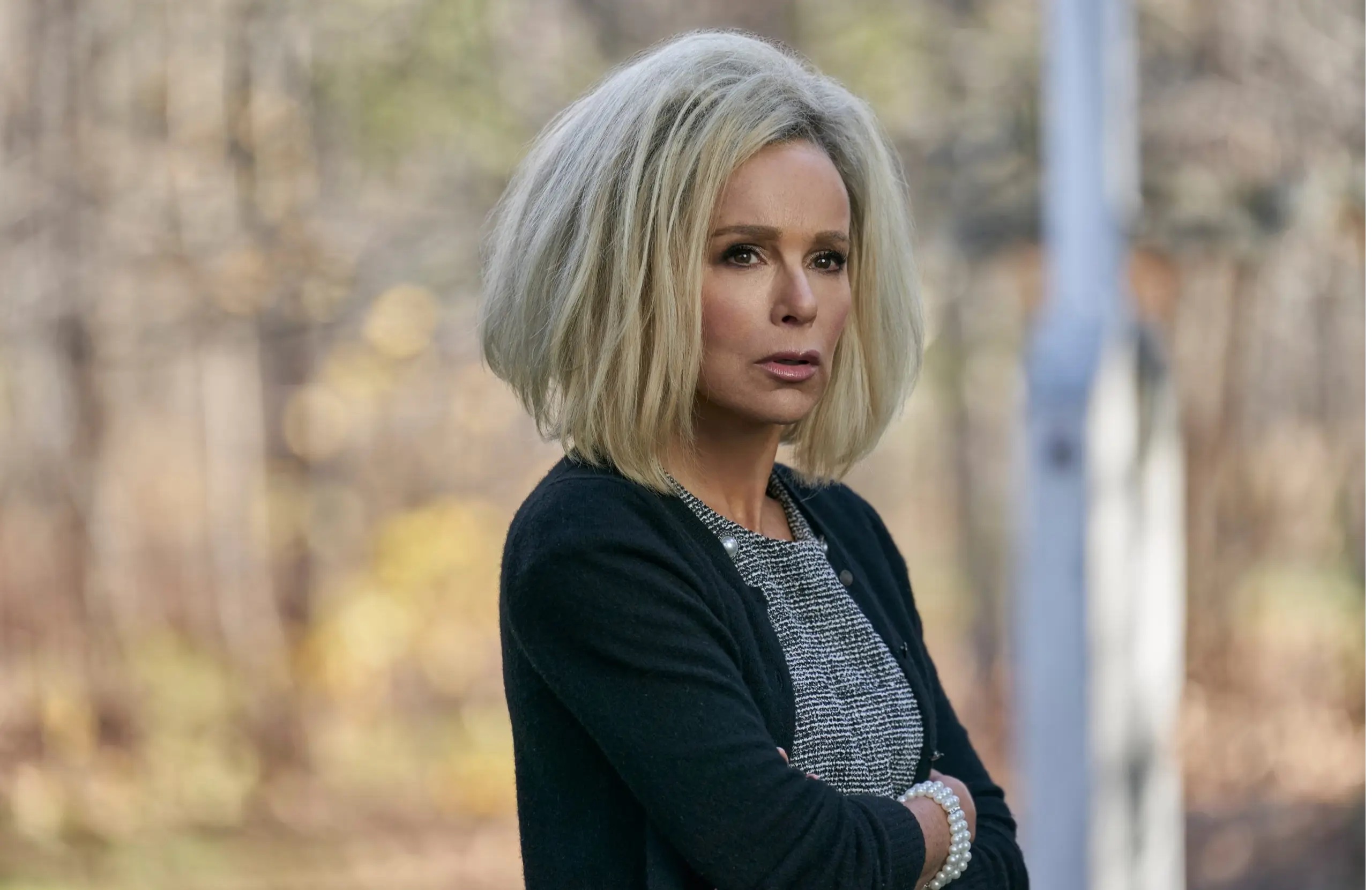
Perhaps the most fascinating thing about these two coifs is that they were inspired by real-life looks. Hong Chau told Tudum that when she envisioned her Night Agent character Diane Farr (no, not that one), she saw a commanding woman with a head full of silver hair, like that of her friend Susan Choi, author of The Foreign Student. But a quick Google image search on Choi just confirms how bad the resulting wig, with its ever-shifting part, looked atop Chau’s Oscar-nominated head. Instead of “silver fox,” the platinum bob reads “scaredy cat,” as if Farr had just seen a terrifying ghost. There’s also something so noncommittal about the length; her character’s gravitas comes entirely from Chau’s performance.
Gwen Shamblin, on the other hand, provided a much more heightened source of inspiration for Jennifer Grey’s look in the Lifetime movie Starving for Salvation. The late author/scammer believed that a towering ’do could bring her closer to her god, and accordingly teased, sprayed, and maybe even threw in some extensions for her hair. Grey’s TV movie hairstyle should be decidedly unhinged to match that spirit, but instead, she spends most of the time looking like she’s auditioning for a local theater production of Grease. The bob is typically a powerful look, but in these two cases, it falls flat. — Danette Chavez
Postcards from the Edge: The Braid Work of Dennis Quaid in Full Circle and Meryl Streep in Only Murders in the Building

It takes a second to realize that Chef Jeff, the plausibly oblivious center of a culinary empire played by Dennis Quaid in Full Circle, is sporting a lovingly curated French braid. Given the mileage that celebrity chefs have gotten out of their quirky appearances (Marcus Samuelsson's hats; Guy Fieri's entire deal), it fits that Chef Jeff would not only be able to get away with a hairstyle last seen sported by Chloe Sevigny on Big Love but thrive with it. It's an objectively unhinged look, however, and a reminder that people stopped telling this man "no" a long time ago. A better display of braid work is being exhibited by Meryl Streep's Loretta on Only Murders in the Building. A longtime aspiring stage actress who finally catches her big break in Oliver Putnam's Death Rattle, Loretta's unfussy braid work communicates a humility (perhaps designed to disguise her identity as Ben Glenroy's killer??). Loretta also shows more versatility with her braidwork, sometimes wearing it up, sometimes in two pigtails. Meryl Streep exhibiting versatility on screen? Groundbreaking. — Joe Reid
No Time to Dye: Heléne Yorke's "Serious" Brunette Look in The Other Two and Seth Rogen's Platonic Bleach Job
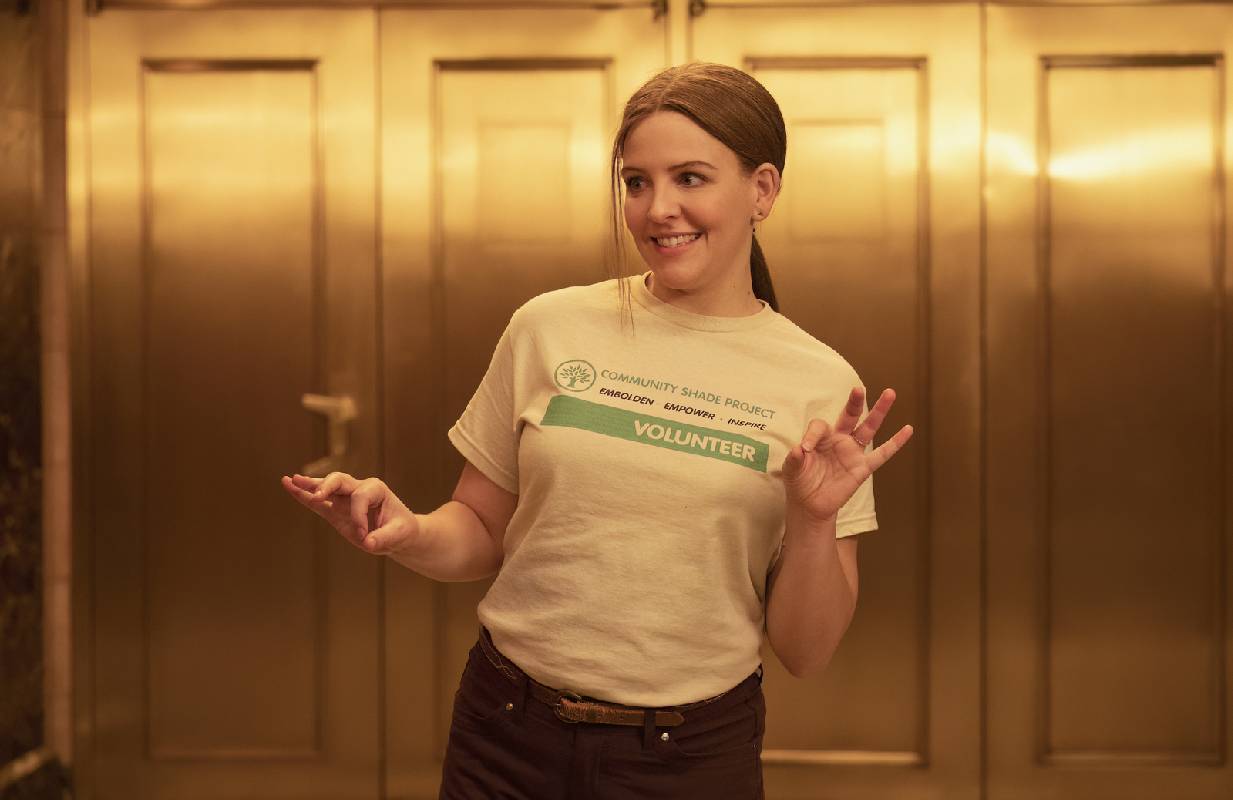
The Other Two's Brooke Dubek (Heléne Yorke) probably wouldn't give Platonic brewmaster Will (Seth Rogen) the time of day, but they share something important: They both believe their hair color conveys something critical about their maturity. After leaving the industry, Brooke sets out to transform into "a simple woman of service" by going brunette — after all, it would be "sort of braggy to still have blonde hair" while adding pronouns to her Instagram bio and planting a few trees in the Bronx. Will takes his makeover in the opposite direction by bleaching his hair to look like Machine Gun Kelly, believing it will impress the twentysomething woman he's seeing. Neither dye job has the intended effect, but Brooke's and Will's effort to portray a certain image to the outside world stands as an important reminder of the power (and limitations) of hair. — Claire Spellberg Lustig
No Bullsh*t: Charlie's Magnificent Mane on Poker Face
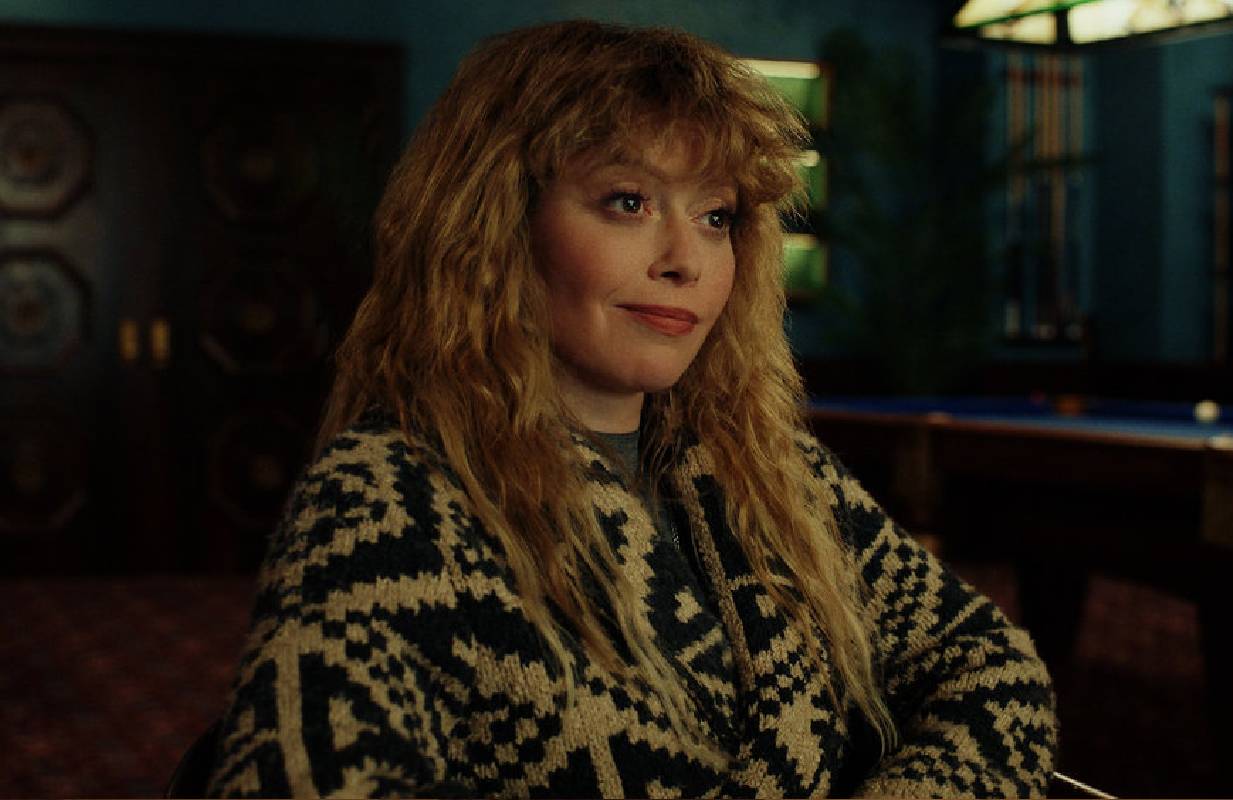
Natasha Lyonne's spectacularly lush head of hair is a national treasure. It ought to be insured, like Betty Grable's legs were in the 1940s. Russian Doll seemed to be the moment when the culture came around to the singularity of Lyonne's talent and screen presence, and appreciating her resplendent hair was a part of that. As Charlie on Poker Face, Lyonne's ability to sport hair that looks both messy and intentional at the same time was put to great use. That's kind of Charlie's vibe in a nutshell: She seems like her life is a shambles, but she's sharper and more determined than she gets credit for. That's how she gets you. — Joe Reid
The Curious Case of Graham's Gray Wig in Daisy Jones & The Six
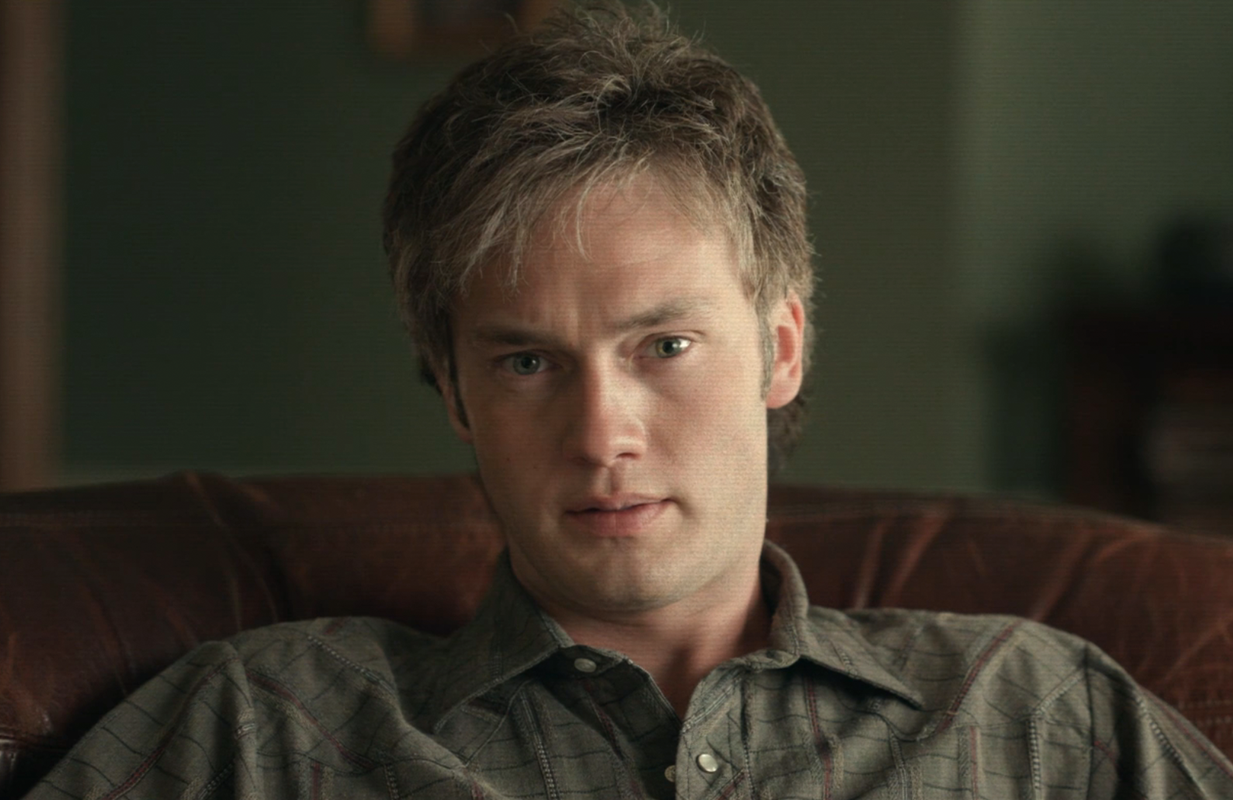
Of all the bizarre attempts at aging (and de-aging) on TV this year, Daisy Jones & The Six remains particularly baffling. There's no consistency to the way each actor is aged up in the present-day interview scenes, which take place 20 to 30 years after the band's meteoric rise and fall. Daisy Jones (Riley Keough) and Billy Dunne (Sam Claflin) look even younger here than during their rock star days — sobriety and Botox go far, but they can't turn back time — while younger brother Graham Dunne (Will Harrison) has gone full silver fox, even as he's avoided all other physical signs of aging. His gray, Ellen DeGeneres-inspired wig and naturally smooth skin made for a visual contradiction so jarring it took me out of the scene entirely; months later, I'm still confused how his mop of curls turned into that choppy cut. Justice for Graham, who deserved better in all things love and wigs. — Claire Spellberg Lustig
Cache of ’Staches: Jake McDorman in Mrs. Davis; Justin Theroux in White House Plumbers; Carlos Santos in Primo
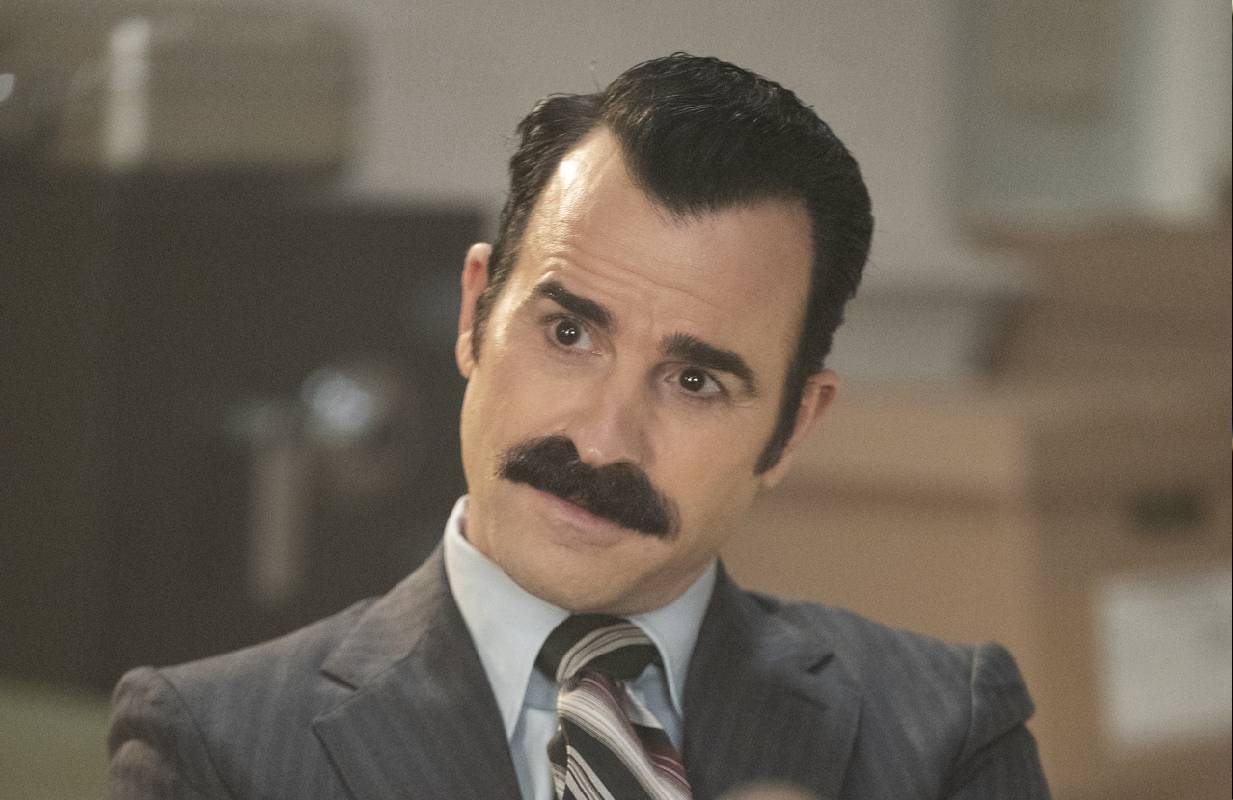
When the Magnum P.I. reboot replaced the titular character’s iconic mustache with stubble (egregious, given that Jay Hernandez could pull off both!), we began to despair that TV facial hair would be relegated to animation, or would always need to be accompanied by a beard. But in the last year alone, we’ve seen enough lip foliage for a whole squad of Hawaiian private eyes. Justin Theroux kicked things off with a homegrown approximation of G. Gordon Liddy’s lush ’stache in HBO’s White House Plumbers; he may not have loved the look, but it certainly helped him slip into the role of the disgraced FBI agent embroiled in the Watergate scandal.
And, as befits any show with Mexicans, especially one that was also made by Mexicans, Primo boasted its own great bigote via Carlos Santos, who brought his Pancho Villa look over from Netflix’s Gentefied (we know, Santos is Puerto Rican, but Puerto Ricans also sport some sweet ’staches). But no one threw themselves so fully into the land of face lace like Jake McDorman, who grew a horseshoe mustache to play Wiley, the erstwhile cowboy and Tyler Durden-quoting revolutionary in Peacock’s Mrs. Davis. The smell of Stetson practically wafts off the screen. His mustache signifies Wiley’s Luddite status, yes, but it’s also meant to evoke a time before an all-powerful A.I. started speaking in everyone’s ear — not to mention, present Simone (Betty Gilpin), a nun hellbent on destroying the eponymous technology, with another test of earthly temptation. — Danette Chavez
TOPICS: The Righteous Gemstones, Daisy Jones & The Six, Full Circle , Gwen Shamblin: Starving for Salvation, Mrs. Davis, The Night Agent, Only Murders In The Building , The Other Two, Platonic, Poker Face, Queen Charlotte: A Bridgerton Story, The White House Plumbers, Casey Wilson, Dennis Quaid, Golda Rosheuvel, Helene Yorke, Hong Chau, India Amarteifio, Jake McDorman, Jennifer Grey, Justin Theroux, Meryl Streep, Natasha Lyonne, Seth Rogen, Stephen Schneider, Will Harrison